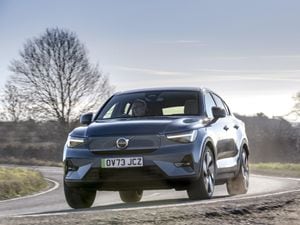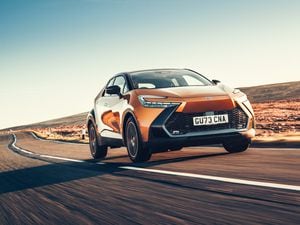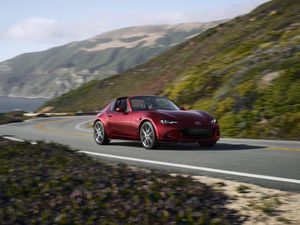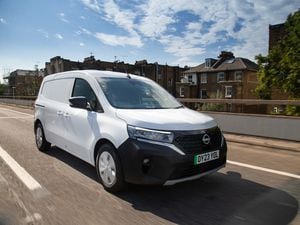UK Drive: The Honda HR-V is a comfortable and efficient hybrid crossover
Honda’s new HR-V has landed on UK soil. Ted Welford puts it to the test

What is it?

Some car firms like to inundate their customers with options, filling every possible niche, while others tend to go down a more condensed route. The latter certainly applies to Honda, which currently sells just four models in the UK, though they cover plenty of bases – family hatch, electric city car, big SUV and little SUV.
It’s the latter model on that list we’re interested in, the HR-V. It’s a nameplate that’s been used for two generations previously, and for the third iteration, Honda is back with a model that aims to make some big improvements. But does it succeed?
What’s new?

This new HR-V is far from just being a facelift, as it looks rather different to its predecessor inside and out, with striking features including a coupe-like profile, body-coloured front grille and new touchscreen.
Under the surface is also new, with the HR-V getting a new hybrid powertrain in-line with the brand’s strategy to electrify its full range – something it has already successfully done in Europe. Yet it’s retained some of Honda’s well-trodden attributes, not least the clever cinema-style flip-up ‘Magic Seats’ and a strong focus on safety.
What’s under the bonnet?
Honda’s latest Jazz debuted a new hybrid powertrain for the Japanese firm, and the HR-V uses the same basic setup, though gets more power to deal with its greater heft.
A 1.5-litre petrol engine serves as the basis, with twin electric motors and lithium-ion battery joining it. Combined, the HR-V puts out 129bhp and 253Nm of torque, sent exclusively to the front wheels via a CVT automatic transmission.
In terms of performance, the HR-V gets from 0-60mph in 10.5 seconds, and would hit a top speed of 106mph, but efficiency is likely to be more important here, and it’s an area where it delivers. The 52.3mpg claimed fuel economy figure is easily achievable, while CO2 emissions stand at 122g/km.
What’s it like to drive?

Honda’s been turning its hand to hybrids for two decades, and that shows with the HR-V’s efficiency, as it’s able to spend an impressive amount of the time running on electricity, particularly around town. But there’s one real weak point and that’s the powertrain’s refinement. Put your foot town (and not even all that harshly) and the engine quite literally roars into life, and not in a good way. If you’re getting up to speed or going up a hill, it sounds awful and with no option to ‘change up’, you’ve just to let the car do its own thing and wait for it to quieten down.
Elsewhere, though, the HR-V fares much better, with a particularly comfortable ride that soaks up suspension well, and though it’s not the best handling car in its class, it sticks to the road well.
How does it look?

There’s no denying that Honda has worked hard to make the HR-V more noticeable than its predecessor, which in fairness wasn’t a bad looking car, either.
It’s certainly different, with elements like the body-coloured horizontal grille and sharp LED lights featuring ‘scrolling’ indicators really helping to give the HR-V a more high-end appearance. With all versions getting large 18-inch alloy wheels, a rear LED light bar and chunky gloss black plastic on the wheelarches and lower areas, this new Honda is certainly a bold step forward for Honda design.
The coupe-like profile is another neat element, while fans of the ‘rugged’ look will appreciate the HR-V’s high ride height, though it does mean you can see the chassis quite noticeably underneath it, which just looks a bit untidy.
What’s it like inside?

The HR-V’s interior is another noticeable step up, too, with the quality really improving, though some cheaper areas remain around the dashboard.
A particular highlight is the new nine-inch touchscreen. If you’ve ever had the misfortune of using a Honda with the old Garmin-sourced system, you’ll appreciate what a step up this new screen is. It’s so much slicker, clearer and is kitted out with features – the addition of wireless Apple CarPlay being particularly welcome.
Unfortunately, though, the HR-V falls short when it comes to space. It’s almost a reverse Tardis, not feeling as roomy inside as its exterior looks suggest. At 335 litres, the shallow boot is smaller than even many hatchbacks, while rear headroom is slightly impacted by the sloping roof. One advantage, though, are the clever ‘Magic’ seats, which either flip up to allow taller objects to be stored in the rear footwell, or fold completely flat.
What’s the spec like?

Three trim levels are offered on the HR-V, with the range beginning with the £28,835 Elegance. Standard equipment is very generous though, including that nine-inch touchscreen, heated front seats, a reversing camera and a vast array of safety equipment.
If you upgrade to the Advance, costing from £31,555, it brings an electric boot, heated steering wheel and climate control. At the top of the range, the Advance Style packs a unique exterior look, two-tone paint finish, light grey synthetic leather interior and roof rails, though does seem expensive at £33,835.
Verdict
Honda has made some sizable gains with this latest HR-V, with its more stylish look and high-quality interior both being welcome improvements. Generous standard equipment levels and the hybrid’s impressive efficiency will please many, too.
However, there are two areas of surprising weakness with this Honda – first its practicality and second the noisy powertrain. If you can live with both of these, though, the HR-V is still a fine choice, but there are better options available in the form of the Ford Puma and Volkswagen T-Roc.





